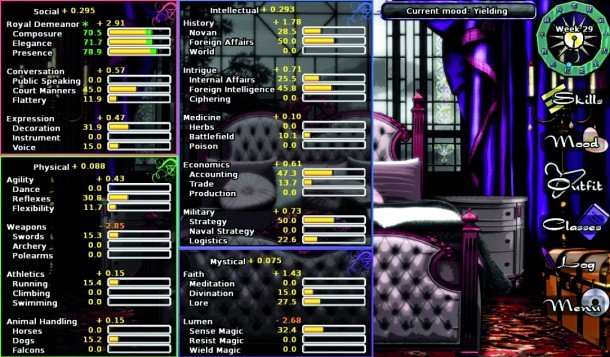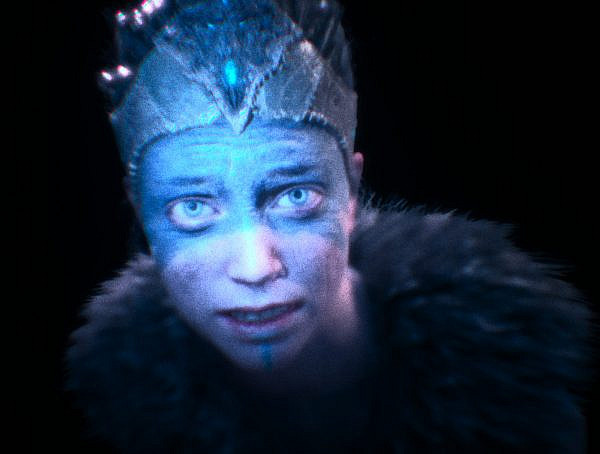In their study “Character Diversity in Digital and Non-Digital Games,” Alexandra To and others argue that diversity in games should be a continuous project from platform to audience, instead of a narrow scope of defining diversity and inclusiveness through visual elements, like customizable avatars. This can be achieved through methods to bring non-normative experiences and identities in games on a more inclusive level. In addition, the extensive game analysis used as a material for the study is extended to diversity-related affordances in games, both digital and non-digital. Five strategies are introduced to create more representation of non-normative identities in games: visual design, abstract representations, setting and roles, conversation design, and game systems and rules.
User-controlled customization is a common strategy for creating diversity, but it is not the only way visual design can challenge norms. For example, In Dragon Age series (Bioware), players’ assumptions about age are challenged by introducing older characters in many roles throughout the series, especially in places of power.
Abstract representations are non-visual—the clearest example of these being statistics. In the game Long live the Queen (Hanako Games, 2012), the goal is to teach Princess Elodie skills for managing the kingdom. Despite being a girl, she is in the beginning equally as clueless about all skills, both “masculine” and “feminine,” but they can all be equally beneficial. Thus, the game implies that Elodie doesn’t need to abandon the more feminine traits to be a skilled ruler but isn’t limited to those activities either.
Setting and role often play a significant part in creating a context for the characters. They can cue the player in on what to expect from the game and its events. Some games create vast fictional worlds packed with lore; others rely on simple, familiar tropes and let the players themselves fill in the gaps with their imagination. It is essential that games search for ways to subvert players’ expectations regarding marginalized identities. Dragon Age series introduces marginalized identities in a fictional framework that player likely doesn’t have prior knowledge, like discrimination of elves and dwarves in the series. By establishing this normative power structure (alien races being treated as lesser), it can be then defied by creating an elven or dwarven protagonist that is the only one able to save the world. Digital games often have a more complex fictional world to frame the non-normative narratives they portray. Non-digital games usually have to do with less setting materials as it is more difficult for the player to internalize an elaborate setting in a tabletop RPG than in a console game, for example. Non-digital games, however, allow players to co-create, which can conjure interesting negotiations on social norms and identities related to them.
Similarly, conversation design in non-digital games is less scripted and include more improvisation. Non-digital games had less control about the direction in which the conversations flow than digital games, which rely on pre-scripted dialogue with some player control. Pre-scripted dialogue can be a useful tool to introduce marginalized identities in the game while controlling how the player’s character can interact with them. In Dragon Age Inquisition one of the companions is transgender, and after knowing them for some time, the player can ask about the matter. Still, there are no transphobic dialogue options available in the dialogue tree.

Figure 2. Traumatic childhood and later, her lover’s death greatly affect Senua’s affordances on her quest.
The game system and rules can be used to explore different identities in a way that’s beyond physical representation. In Hellblade: Senua’s sacrifice, the protagonist experiences psychosis that alters the play mechanics and affordances the player has: neurodivergent identity is portrayed as essential to the story progression. In Thou Art But A Warrior (Kreider, 2007) the Islamophobic tropes are turned upside down. The protagonists are Muslim knights that fight Christian crusaders. Some actions, like failing to defend their people, accumulates Weariness points. At the end of the game, enough Weariness will cause the character to convert to Christianity or die. Both options are mechanically similar, and this highlights the character’s religion as part of their identity.
Depicting more diversity is hardly problem-free. Depiction of marginalized groups can reinforce marginalized positions in some people’s minds. Avoiding stereotypical representations of non-normative groups can also backfire if referring to the group is so symbolic that it is only recognized by the players identifying with those groups. Players can also utilize diversity in problematic, unintended ways.
There are different ways to facilitate inclusiveness and diversity in identities in games. Digital and non-digital games create different affordances for the player to approach diversity themes. Thus, it could be beneficial to explore a range of different games with diverse characters. Playing the game with a diverse group of people can also introduce more diversity into players’ game experience.
To, A., McDonald, J., Holmes, J., Kaufman, G., & Hammer, J. (2018). Character Diversity in Digital and Non-Digital Games. Transactions of the Digital Games Research Association, 4(1). doi: https://doi.org/10.26503/todigra.v4i1.84
photos:
header: By Aline Viana Prado / Free to Use
figure 1. Long Live the Queen Presskit
figure 2. Hellblade: Senua’s Sacrifice Presskit
You might also like
More from Game Research Highlights
How do you want to do this? – A look into the therapeutic uses of role-playing games
Can playing RPGs contribute positively to your wellbeing? A recent study aims to find out how RPGs are being used …
Eldritch horrors and tentacles – Defining what “Lovecraftian” is in games
H.P. Lovecrafts legacy lives today in the shared world of Cthulhu Mythos and its iconic monsters. Prema Arasu defines the …
Are Souls Games the Contemporary Myths?
Dom Ford’s Approaching FromSoftware’s Souls Games as Myth reveals the Souls series as a modern mythology where gods fall, desires …
















